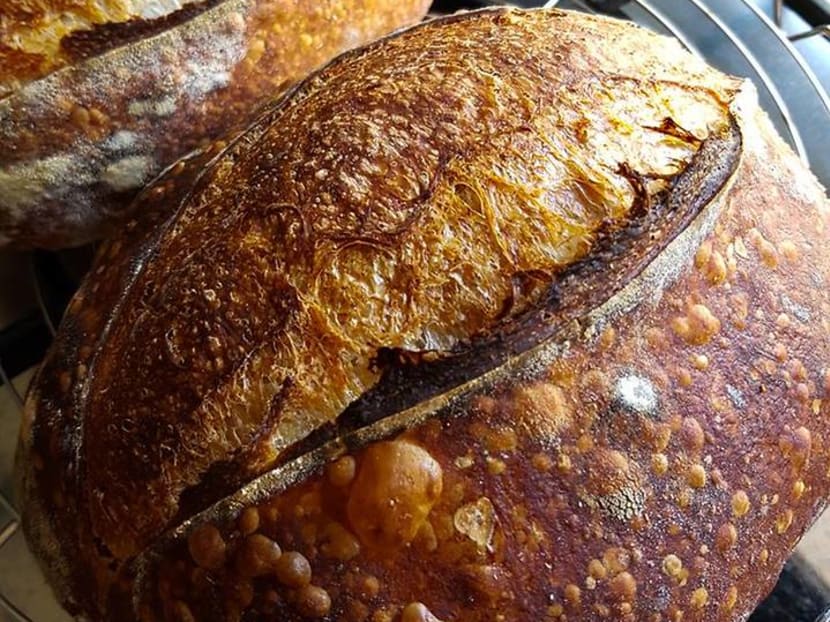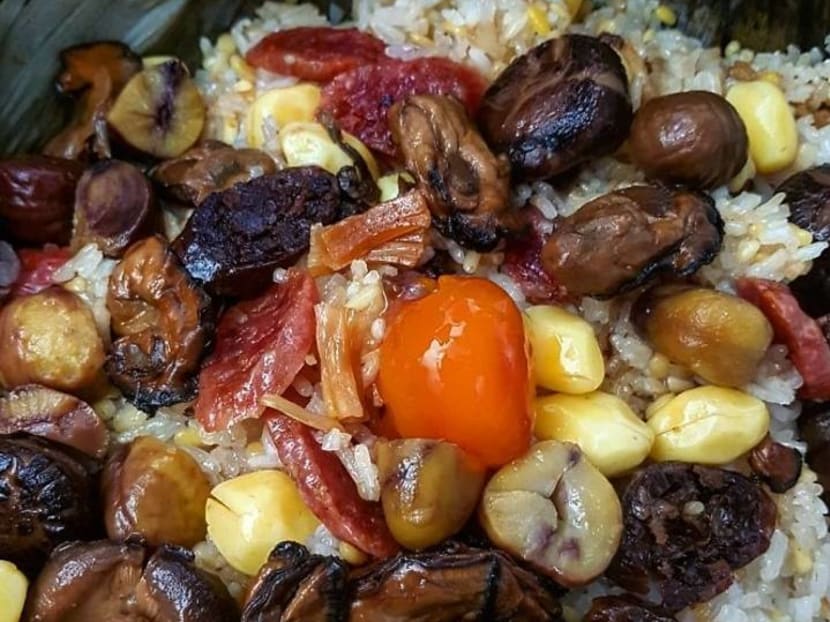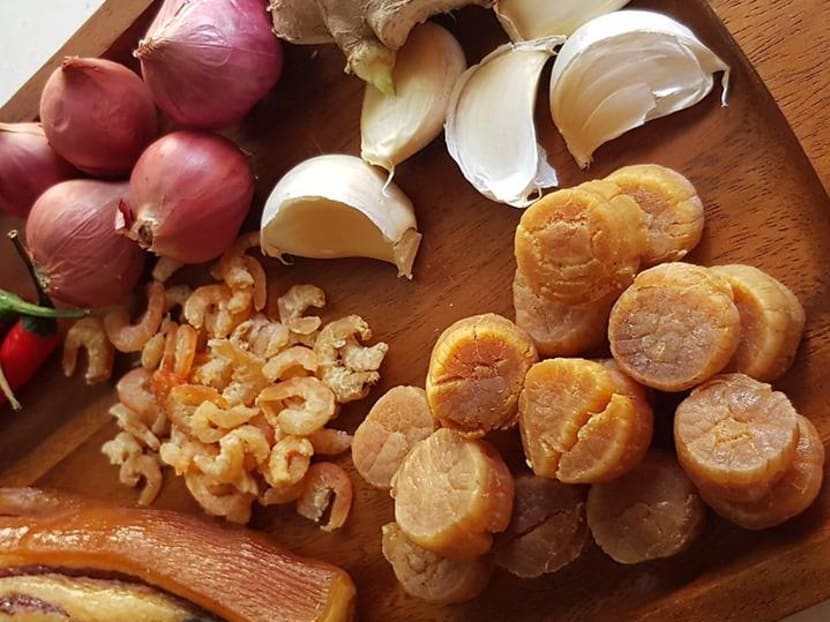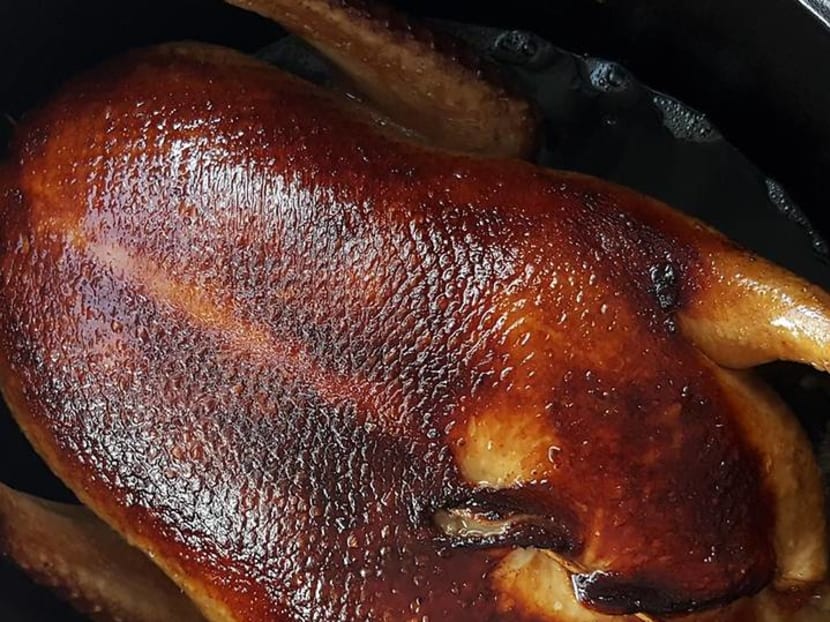Eight Treasure Duck Stuffed With Glutinous Rice The ‘Bak Chang’ Of Your Dreams
It takes almost two days to cook the deboned bird.
If you love the umami flavours and unctuous textures of a rice dumpling, but wish it could be more meaty than starchy, you’ll love home cook Sylvia Tan’s Eight Treasure Duck. For $118, you get a 2.4kg deboned duck wrapped in a lotus leaf parcel, stuffed to precarious voluptuousness like an overblown balloon threatening to burst, with glutinous rice, lup cheong and other goodies. The laborious dish that feeds six hungry adults takes over two days to source, prep and cook — but will probably disappear in a flash at your dining table.
The 43-year-old freelance writer, who had a year-long stint as producer at CNA 20 years ago, found herself with less work than usual while being cooped up at home during the Circuit Breaker. Not one to keep idle, the enthusiastic home cook who used to cook for friends every other week decided to introduce her cooking to a larger audience. The Eight Treasure Duck — a Chinese classic that features a whole bird, oftentimes deboned and stuffed with a variety of fillings — is a dish that has been her signature party dish since 2013. The ducks sold at restaurants are usually cooked naked, but Sylvia’s rendition is wrapped in a lotus leaf, inspired by bak changs eaten during Dragon Boat Festival.

Sylvia is a seasoned home cook who insists on doing everything from scratch in her Tiong Bahru flat. She makes sourdough bread (with a starter hilariously christened #ryehanna), bagels, English muffins and even naans. She borders on being masochistic in her love for tedious dishes, and also makes filo pastry from scratch. “The dishes that give me satisfaction have some kind of difficulty factor,” she confesses. “I like food with a long heritage and which tastes good because of those time-honed practices.”

If you thought Sylvia grew up in a households where labouring in the kitchen is life: nope. “My Cantonese mother was working full-time when we were growing up, but she always made sure we had nutritious homecooked meals, including proper soups, of course. She’s a practical person who doesn’t like laborious dishes, but she cooks with integrity, has a good palate and introduced me to ingredients from the usual things like dried oysters to the more unusual such as dried seahorse, sea dragon and sea sparrow. I learnt to look closely at my food when I was growing up,” shares Sylvia. Sylvia’s Teochew father, on the other hand, grew up on St John’s Island and loves fishing. He still shares the bounties of his fishing trips with Sylvia, who transforms them into dishes like otak-otak.

While she learnt the fundamentals of cooking from her mother, Sylvia’s culinary education went on for life. Most of us are happy with taking #foodporn shots of local delicacies on our travels, but Sylvia would sit by a tandoor for hours in India, or take videos of traditional ovens for making burek (a meat pie in filo pastry) in Bosnia — just to find out how the pros do things. As a freelance writer with a flexible schedule, Sylvia took the WSQ Hygiene and Food Safety course “to make sure all my cooking wasn’t going to harm any guest” using her SkillsFuture credits. She adds: “I’d love to do a butchery course, but in Singapore it’s mainly accessible only to employed F&B staff who get a subsidy through their companies.” She has also taken two courses at At-Sunrice GlobalChef Academy to learn how to prepare agemono (deep-fried Japanese dishes) and sushi, and was going to take a traditional Chinese hawker fare course just before the COVID-19 pandemic happened.

Sylvia displayed her talent for cooking long before she took any of these professional courses. While most of us were glad to have not burned down the school while making fried rice during Home Economics class, the very first dish she cooked all by herself was a deboned roast chicken stuffed with rice. This was during her late teens, and she’d seen the dish being prepared in a television show, but Sylvia managed to succeed at her first attempt to recreate it with a spring chicken. “And I didn’t poison my brother or myself either!” she announces triumphantly.

The Eight Treasure Duck is a classic Chinese dish with variations between the different dialect groups. Sylvia’s version using Malaysian duck takes inspiration from a version she remembers eating at Cantonese wedding banquets. It also takes a page from rice dumplings ’cos it’s wrapped in a leaf parcel too. “The dish is rarely eaten at home as it takes some dexterity and a lot of practice to debone the bird, such as removing its frame without breaking the skin. Due to the laborious process of preparing the dish, it's often referred to as a ‘vanishing’ heritage dish,” says Sylvia, explaining her motivation behind selling the dish.
The Eight Treasure Duck is not always deboned, but by doing so, Sylvia has created a larger cavity that allows for stuffing in glutinous rice. The grains sop up the juices of the bird and combined with the flavours of the eight filling ingredients, lend it an intense richness. Sylvia uses the fat and some of the drippings from the duck to make a roux for a gravy served on the side. You also get 60g of homemade XO sauce and a vinegary vegetable, making it a complete meal.
While selling the dish is a small source of income, Sylvia highlights that it is not a scalable business. “I’m happy to be able to practice my knife skills and offer people a chance to try a heritage dish that is far too time consuming to make on regular days. Also, this is not meant to be an everyday dish — it’s something old-fashioned that I thought a handful of foodie folks might enjoy.”

It takes 30 minutes to debone one duck. She then spends another 15 minutes to pluck out all the quills – “I can’t stand them!”. Next, she marinates the bird with soy, stuffs it, pan-sears it to brown, then wraps it in lotus leaves and steams it.
However, she says sourcing for the stuffing ingredients such as glutinous rice, mung beans, mushrooms, dried oysters, dried prawns, lup cheong, salted egg yolks and chestnuts is the most tedious part of the process. “I had to start an Excel sheet to keep track of all eight to ten treasures (I know it’s meant to be 8 but I’m greedy!), the amount needed, and across the number of orders,” says the precise cook. She also had to do a taste test of lap cheong and yun cheong (dried liver sausage) available locally, as her personal stash is often gifted by friends from Hong Kong.
“I also need to think through the lengthy process, such as when to start soaking the dried ingredients (some need to be soaked overnight such as the glutinous rice), as you can’t rush any part of the preparation. I also ask people for precise pickup times so I can time the cooking as close as possible, and time the process backwards from there.”

Sylvia is limited by the size of her home fridge, so she can only cook two ducks a day – and she’s all booked out for the month of June. Those interested in ordering for July can visit bit.ly/8treasuresduck (you’ll have to arrange for delivery yourself). You can ask Sylvia more about the dish at @syldreamsof on Instagram.










